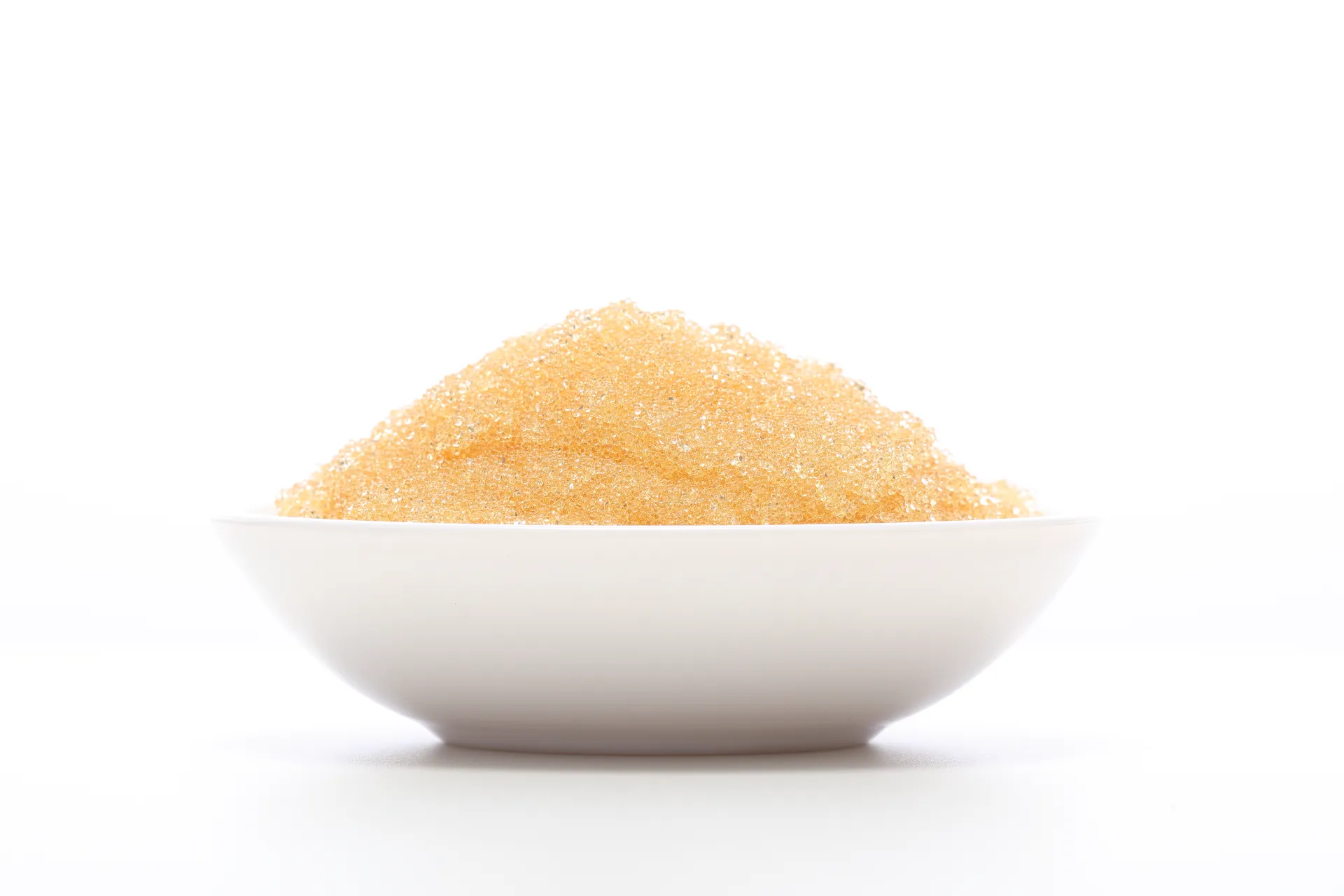Field Notes on 001X7: What a modern plant really needs from a strong acid cation resin
When operations managers talk to me about bottlenecks, they rarely start with membranes—they start with their strong acid cation exchange resin. Makes sense: this is the spearhead for softening and demineralization. The 001X7 grade I’ve seen on the floor lately is a gel-type polystyrene–DVB matrix sulfonated to behave, frankly, like “solid sulfuric acid.” It’s old-school chemistry, polished for modern water lines.

Industry snapshot
Demand is shifting toward higher-capacity, lower-fouling gels that survive aggressive clean-in-place routines. Power plants still want reliability over glamour; beverage and pharma—rightly—care about certifications and extractables. Lead times matter. To be honest, so does the vendor’s willingness to tweak mesh size and shipping form without making you wait a quarter.
What 001X7 actually is
The 001×7 is a gel-type strong acid cation exchange resin built on a polystyrene-divinylbenzene backbone, sulfonated for full acid functionality. In operation, think H+ or Na+ cycles for softening, dealkalization, or demin. Many customers say regeneration efficiency feels a tad better than their last lot—probably the bead uniformity.
| Key spec (001X7) | Typical value (≈, real-world may vary) |
|---|---|
| Total exchange capacity (H+ form) | ≥ 2.0 eq/L |
| Moisture content | 45–52% |
| Particle size (0.315–1.25 mm) | ≥ 95% in range; UC ≤ 1.7 |
| Operating pH | 0–14 (oxidant-free) |
| Max temp | 120 °C (H+), ≈ 140 °F recommended in service |
| Shipping forms | H+ or Na+ |
Materials, methods, and testing
Base polymer: polystyrene crosslinked with DVB; sulfonation via sulfuric acid route (gel, not macroporous). Factory QA typically runs ASTM D2187 panels—moisture, capacity, bead integrity, swelling. I saw lab sheets showing ≤2% osmotic breakage after five cycles; service life is around 2–5 years depending on iron load, oxidants, and regeneration discipline.

Where it fits
– Water softening ahead of RO and boilers (power, textile)
– Two-bed and mixed-bed demin for electronics and pharma UPW polish
– Food & beverage de-alkalization; condensate polishing
– Chemical processing (acid catalysis beds—select cases)
Certifications that buyers ask for: ISO 9001 manufacturing, NSF/ANSI 61 for potable contact, and WQA/Gold Seal for drinking-water components. If you’re in beverage, your QA will also look at TOC and extractables—request the lot COA.
Vendor snapshot (real-world purchasing notes)
| Vendor | Capacity | Uniformity | Certs | Lead time |
|---|---|---|---|---|
| 001X7 (Hebei plant) | ≈2.0 eq/L | UC ≤1.7 | ISO 9001; NSF/ANSI 61 on request | 2–4 weeks |
| Generic Brand X | 1.8–2.0 eq/L | UC ~1.8–2.0 | ISO 9001 | 4–6 weeks |
| Imported Brand Y | 2.0–2.1 eq/L | UC ≤1.6 | NSF/ANSI 61; ISO 9001 | Stock-dependent |
Customization and handling
Options include H+ or Na+ shipping form, custom mesh (e.g., 16×40), and higher crosslink variants for hot, oxidant-prone loops. Always pre-rinse to conductivity spec; target
Two quick case notes
– Power plant DMU: swapping to strong acid cation exchange resin 001X7 cut hardness leakage to
– Beverage RO pre-treatment: 001X7 in Na+ form dropped scaling alarms by 30% and saved one CIP cycle per month. Anecdotal, sure, but consistent with what I’ve seen elsewhere.

Origin and logistics: NO.2 East Jianshe Road, High-Tech Industrial Development South Zone, Wei County, Xingtai, Hebei Province, China. Palletized drums, keep wet, avoid oxidants, and never freeze if you can help it.
Standards, compliance, and references
Tested to ASTM D2187 panels; potable applications typically rely on NSF/ANSI 61 compliance. Manufacturing under ISO 9001. For validation packs, ask for COA with capacity, moisture, bead integrity, and sieve analysis.
- ASTM D2187 – Standard Test Methods for Physical and Chemical Properties of Particulate Ion-Exchange Resins.
- NSF/ANSI 61 – Drinking Water System Components – Health Effects.
- IUPAC Compendium of Chemical Terminology (Gold Book) – Ion exchange definitions.
- WHO Guidelines for Drinking-water Quality, materials in contact with water.
Hebei Lijiang Biotechnology Co., Ltd, is a new material manufacturer specializing in the production of high-performance special ion exchange resins.mixed bed resin suppliers It is a modern high-tech enterprise that integrates the research and development,production, sales, and service of resin materials and resin terminal products.ion exchange resin The company is committed to producing high-quality industrial grade, food grade,pharmaceutical grade, and nuclear grade resins.cation exchange resin It has passed ISO9001 management certification,SGS certification, and WQA international certification from the American Water Quality Association, and has obtained a national food hygiene license. Food grade resin products comply with FDA standards in the United States.super blog